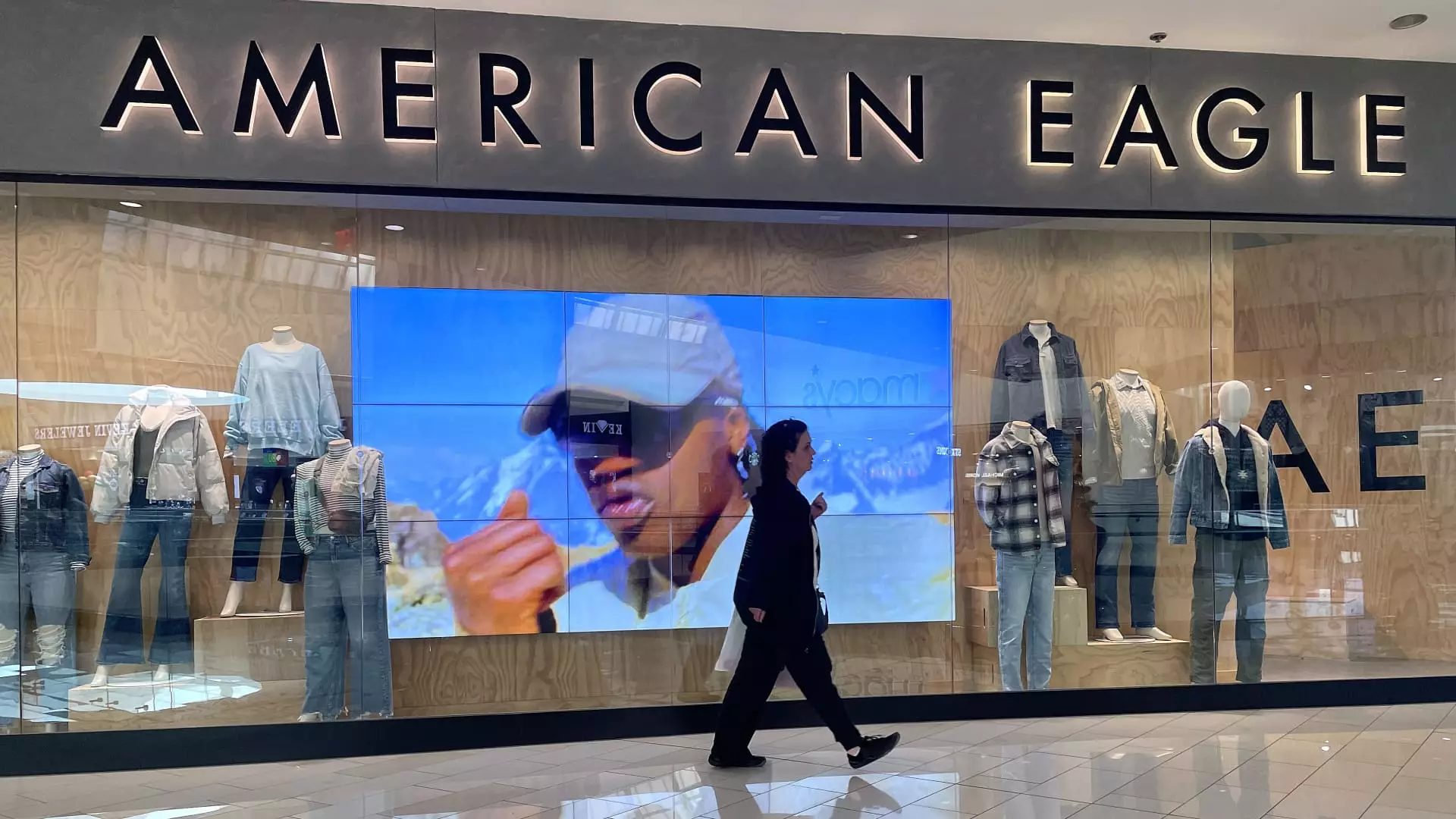American Eagle Outfitters recently faced a significant decline in its stock value, dropping approximately 13% in after-hours trading following the release of its third-quarter earnings. The retailer, known for its casual apparel, reported a mixed performance that fell short of expectations in terms of revenue, signaling potential challenges ahead as the company navigates the unpredictable retail landscape. Notably, American Eagle’s decision to lower its full-year forecast and provide disappointing holiday guidance has raised several eyebrows among analysts and investors alike.
The company’s fiscal third-quarter results revealed a net income of $80 million, translating to earnings of 41 cents per share, down from $96.7 million or 49 cents per share a year earlier. While American Eagle slightly beat Wall Street forecasts on earnings per share (EPS), recording an adjusted EPS of 48 cents against an anticipated 46 cents, it narrowly missed revenue expectations, posting $1.29 billion compared to the anticipated $1.30 billion. This marked the third consecutive quarter that the brand failed to meet sales targets, raising concerns about its competitiveness and market positioning.
The ongoing struggle appears to be symptomatic of broader trends within the retail sector. American Eagle attributed its challenges to the evolving behavior of value-seeking consumers who exhibit cautious spending patterns, only participating in key shopping events rather than maintaining consistent purchasing habits. This trend reflects a larger theme resonating across the industry, which many are attributing to economic uncertainties and shifting consumer priorities.
CEO Jay Schottenstein highlighted the impact of these changes in consumer behavior, stating that while the company experienced a robust back-to-school shopping season, the overall demand remained inconsistent. This inconsistency during non-peak shopping periods has echoed through other retailers’ reports, suggesting a larger economic issue where consumers are strategically choosing when to spend, which may lead to volatility for businesses that rely heavily on regular foot traffic.
Looking ahead to the holiday quarter, American Eagle anticipates only a modest rise in comparable sales by approximately 1%, while total sales are projected to decline by about 4%. Factors contributing to this cautious outlook include the impact of having one fewer selling week and a later onset to the holiday shopping season. These forecast adjustments are particularly concerning given that they fall below market expectations, further emphasizing the precarious state of the retailer’s operational outlook.
The updated expectations suggest a notable reduction in growth projections for the full fiscal year. American Eagle now aims for a full-year increase of only 1% in sales—significantly lower than the previous estimate that ranged between 2% and 3%. Moreover, comparable sales growth for the year has been adjusted from a predicted 4% down to 3%, falling short of prevailing market forecasts.
American Eagle’s cautious approach stands in stark contrast to competitors who have displayed more optimism, such as Abercrombie & Fitch and Dick’s Sporting Goods. These companies recently revised their outlooks positively, indicating that they are adapting more successfully to current market conditions. American Eagle’s reluctance to follow suit may reflect deeper-seated concerns about its sustainability in the current economic climate.
However, not all news is bleak for American Eagle. The company reported exceptional growth for its Aerie brand, which achieved record-breaking revenue figures in the third quarter. Aerie’s comparable sales soaring by 5% on top of last year’s 12% growth demonstrates a positive consumer response to specific product lines, which may serve as a silver lining amidst the broader challenges faced by the apparel retailer.
As American Eagle adapts to the dual challenges of fluctuating consumer behavior and an uncertain economic environment, its future remains uncertain. With key decisions impacting the company’s trajectory, stakeholders will be closely watching to see how effectively the retailer can leverage its successful brands while addressing the pressing concerns within its core operations. The broader retail landscape continues to evolve, and American Eagle must navigate this terrain with agility and foresight if it hopes to regain momentum and cultivate a resilient growth strategy in the coming years.

